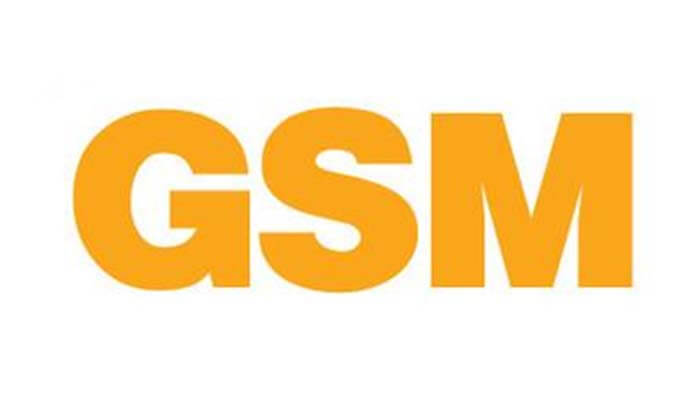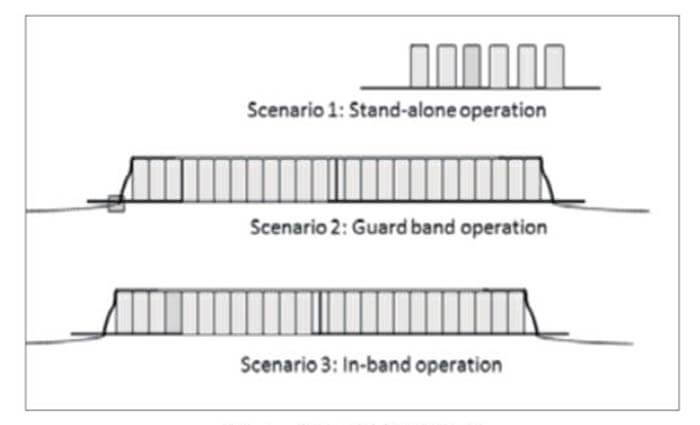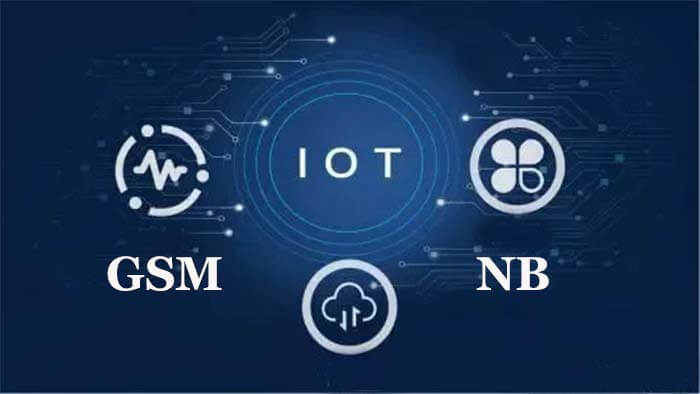This article is analyzing how much radius of GSM and NB-IoT coverage, the channels of GSM and NB-IoT, the principle and characteristics of GSM and NB-IoT, etc.
What is GSM and NB-IoT technology?
GSM (Global System for Mobile Communication) is the most widely used cell phone standard today.

NB-IoT (Narrowband Internet of Things) is a narrowband cellular IoT technology for low-rate, low latency, ultra-low terminal cost, low power consumption and massive terminal connectivity.

The channels of GSM and NB-IoT
Therefore, in this paper, after introducing the channels of GSM and NB-IoT, we analyze and compare the coverage capability of both.
NB-IoT is a new generation of cellular IoT access technology defined by 3GPP for Low Power Wide Area (LPWA) type of services, mainly for IoT services with a low rate, low latency, ultra-low cost, low power consumption, wide and deep coverage, and large connection requirements.
NB-IoT adopts coverage enhancement and low power consumption technologies and simplifies the physical layer transmission method, network structure, and signaling process.
Coverage enhancement is an important feature of NB-IoT, and NB-IoT proposes a coverage target of 20dB enhancement over GSM, i.e. MCL (Maximum Coupling Loss) should reach 164dB, which is mainly achieved by improving power spectrum density, repetitive transmission, and low-order modulation preparation.
The principle and characteristics of GSM and NB-IoT
In this paper, we first analyze the principle and characteristics of GSM and NB-IoT, study the NB-IoT coverage enhancement methods, and compare and analyze the coverage capability of GSM and NB-IoT.
Each cell has a number of carrier frequencies, and each carrier frequency has eight-time slots, which means that eight basic physical channels are provided. In the wireless subsystem, the physical channels support the logical channels, and the physical channels are mapped to different logical channels according to the types of messages transmitted on the physical channels.
In GSM systems, logical channels can be divided into service channels (TCH: Trafic Channel) and control channels (CCH: Control Channel).
- BCCH (including FCCH, and SCH) are broadcast control channels, they appear only on time slot 0 (Ts0) of the BCCH carrier frequency and are downlink channels.
- SDCCH is an independent dedicated control channel, one-time slot (Ts) can usually carry 8 pairs of SDCCH channels, called SDCCH /8 channels.
When the cell signalling traffic is small, we can combine SDCCH, CCCH (including RACH, PCH, AGCH) with BCCH broadcast channel to Ts0, at this time, the time slot is BCCH+CCCH+SDCCH/4.
Among them, BCCH, FCCH, SCH, PCH and AGCH only use the downlink channel of Ts0, RACH only uses the uplink channel of Ts0, and SDCCH is the channel that appears in pairs in the uplink and downlink.
When the traffic of this cell signaling is large, a maximum of 40 pairs of SDCCH channels can be set, occupying 5-time slots, and it can appear on Ts0, Ts2, Ts4, and Ts6 of any carrier frequency. It is worth mentioning that SDCCH can be defined to interconvert with TCH to save channel resources.
- CCCH (including RACH, PCH, and AGCH) is a public control channel, and the number of CCCH message blocks set is related to the service volume of the LAC area to which the cell belongs. When the service volume of this LAC area is large, CCCH can be combined with BCCH only on Ts0, i.e., BCCH+CCCH.
When the service volume of the LAC area is small, the cell control channel can be set in the form of BCCH+CCCH+SDCCH/4.
It is worth noting that the PCH paging channel of a cell is oriented to all cell phone users in the LAC area to which it belongs, independent of the capacity of this cell, therefore, the number of CCCH settings required for each cell should be the same.
- SACCH and FACCH are follow-the-road control channels, which do not exist separately, but take the way of “frame stealing” along with TCH or SDCCH. (SACCH can accompany TCH and SDCCH, FACCH only accompanies TCH)
- CBCH is a cell broadcast channel, which is used to broadcast some public messages of the cell (such as business information, weather information, etc.), and is a value-added service provided by the operator. It usually occupies the third sub-time slot of SDCCH/8, which is a downlink channel and propagates point-to-multipoint.

NB-IoT supports 3 different deployment methods
The coverage target of NB-IoT is MCL 164dB, which is 20dB better than GSM coverage. the coverage enhancement of NB-IoT is mainly achieved by improving uplink power spectrum density and repeated transmission. all three modes of NB-IoT operation can achieve this coverage target.
In the downlink direction, the power of Standalone independent deployment can be configured independently, and the power of In-band in-band deployment and Guard band is limited by the power of LTE, so In-band and Guard ban need more repetitions to reach the same coverage level as Standalone, and at the same coverage level, Standalone’s downlink rate performance is better than the other two; there is basically no difference between the three working modes in the uplink direction.
NB-IoT independent deployment, downlink transmit power can be configured independently, for example, 20W, at this time, NB-IoT power spectrum density is the same as GSM, but about 14dB higher than LTE FDD power spectrum density.
In-band in-band deployment and Guard band protection in-band deployment, the power difference between NB-IoT and LTE can be configured, for example, NB-IoT is 6dB higher than LTE power, at this time, NB-IoT downlink power is still 8dB lower than GSM power.
The maximum transmit power of the NB-IoT uplink terminal is 10dB lower than GSM, but since the minimum scheduling bandwidth of NB-IoT is 3.75K or 15K, the uplink power spectral density of NB-IoT is 0.8~6.9dB higher than GSM.
In practice, when doing network planning, the coverage radius needs to be planned considering the uplink rate target, interference margin, penetration loss, coverage rate, power consumption of IoT terminals, etc.
The link budget results show that NB-IoT coverage radius is about 4 times of GSM/LTE, and NB-IoT coverage enhancement can be used to improve the deep coverage capability of IoT terminals, or to improve the coverage of the network, or to reduce the station density to reduce network cost, etc.
This paper also analyzes the coverage capability of NB-IoT Standalone, Guard band, and In-band deployment methods, and all three deployment methods can meet the coverage target of MCL 164dB by different repetitions, but because the Guard band and In-band power are limited by LTE FDD system power, their power is 5dB or 8dB lower.
However, since the power of the Guard band and In-band is limited by LTE FDD system power, its power is 5dB or 8dB lower than Standalone, so in order to achieve the same downlink coverage capability, more repetitions are needed, and the downlink rate is lower than Standalone at this time; the difference between the three in uplink direction is not significant.
Why GSM is more suitable for the current environment on the eve of the NB-IoT explosion?
NB-IoT vs. GSM
As one of the rapidly emerging IoT communication technologies in recent years, NB-IoT supports low-power devices for wide-area network cellular data connection.
Compared with Wi-Fi products, NB-IoT devices directly connect to the operator network, optimizing the device distribution steps, which can directly avoid network failures due to router node problems and have better network stability.
Compared with the traditional GSM network, NB-IoT has the following advantages in technology.
Wide signal coverage.
It gains 20dB over traditional GSM network, and the signal coverage of one NB-IoT base station is wider than that of traditional base stations, able to reach underground garages, basements, underground pipes, and other places with very poor signals.
Multiple connections.
100,000 connections can be provided per sector, expanding the number of device accesses by 50-100 times with NB-IoT compared to existing wireless technologies.
Low power consumption.
NB-IoT has power-saving technologies DRX and PSM, which can reduce unnecessary signaling and not accept paging information during the PSM state, ultimately achieving a power-saving effect and greatly improving the battery life of the device.
In terms of technical indicators, NB-IoT is indeed more suitable for IoT application scenarios, simplifying the networking steps of smart devices and reducing the power consumption of devices. However, NB-IoT also has its limitations in the current situation.
First, the number of NB-IoT base stations is seriously insufficient, especially in remote mountainous areas.
Except for some first-tier cities, full coverage has not been achieved in other areas. Even in first-tier cities, nooks and crannies are not fully covered because of the limited number of NB-IoT base stations, such as underground garages.
From the current situation of operators building NB-IoT base stations, base stations are more often accompanied by projects for declaration of support, and if the value of the project is too small, it may not get support from operators in the short term.
For example, in the field of smart agriculture, hundreds of acres of fields may only need a few hundred devices to complete the improvement of the irrigation systems. If the operator only supports base stations for this project, the cost is too high.
Secondly, the traffic tariff of NB-IoT is not pro-people enough.
The current information cost of the three major operators is about 20 yuan per year, which is not expensive, but there is still a lot of room for downward adjustment compared with the current GSM traffic tariff.
Finally, the chip price of NB-IoT is not high.
Although the price of a small number of NB-IoT chips has dropped to $5, it is still on the high side compared to WiFi chips and GSM chips. Smart hardware products are more strict in cost control, so NB-IoT has no advantage in this aspect for the time being.
In contrast, although the GSM network looks a bit old, GSM devices can still be well applied to IoT remote control scenarios to meet different market segmentation needs before NB-IoT completely covers the world.
First, 2G/GSM technology is very mature and it has been used in various scenarios that require a remote control. With years of operation and accumulation of operators, supporting base stations are distributed all over the country, and communication networking of GSM devices can be realized in most areas.
Second, in the past, GSM chips were mainly used in industrial and agricultural customization projects due to module prices and traffic tariffs and were rarely adopted by consumer-level personal devices.
After all these years of industrial efforts, the price of GSM modules has come down significantly. Recently, Cool House Technology has launched the super cost-effective GSB-D module, which is priced similarly to mainstream WiFi modules.
The current policy of IoT cards and dedicated targeted traffic also makes the tariff of GSM devices as low as 3 cents per day, which is a small or even negligible tariff cost burden for consumers.
In the long run, NB-IoT technology is more suitable for applications in the IoT field, providing reliable network access for devices and giving them a better range.
However, the current hardware infrastructure of operators has not kept up, and a certain time buffer is needed before full-scale promotion. Therefore, during this transitional period, GSM can fully take over the historical task of NB-IoT as chip prices and tariffs fall, helping manufacturers to develop products for different scenario needs to meet the needs of the home environment and agriculture industry.
GSM and NB-IoT bands, GSM band is the most suitable for NB-IoT
From the standards and technology perspective, NB-IoT deployment in GSM is very convenient and low-cost. Likewise, the current IoT network coverage is already very complete, and NB-IoT can be deployed in the current low-frequency coverage band of IoT.
Ready for NB-IoT commercialization
As an important component of 5G, NB-IoT is now commercially available, becoming one of the few 5G technologies that can be pre-deployed in existing networks.
Besides this Comparison of GSM and NB-IoT Coverage Capability article, you may also be interested in the below articles.
Internal Antenna VS. External Antenna
LTE Vs. 5G: Is 5G Better Than LTE?




